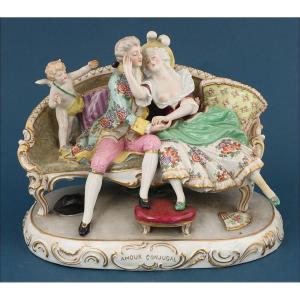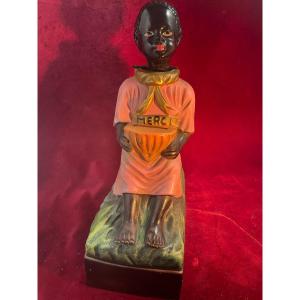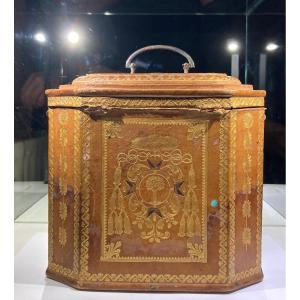The inert body of Christ, with naturalistic anatomy and refined modeling, rests with abandonment and peace in the arms of the two angels. The angels, with youthful, soft, and serene faces, hold the figure of Christ with gestures of profound compassion. Their wings, meticulously detailed, add an ethereal dimension to the composition. The folds of the mantles in the background enhance the plasticity and movement of the scene. The carving reaches a high technical level: the modeling of the bodies, the details of the hands and feet, the curled hair, and the volumetric treatment of the wings display outstanding skill.
The relief shows the characteristic natural curvature of the ivory sheet and preserves the warm patina of the aged material. On the back, natural veins and cracks typical of antique ivory can be observed, testifying to its authenticity and age. These fine lines, far from diminishing its value, add character and authenticity to the piece. No volumetric losses or visible restorations are present, which is particularly remarkable in a work over two centuries old.
Based on its stylistic features, angelic faces, anatomical naturalism, and balanced composition, this relief can be attributed to a workshop from the Germanic or Bohemian area. Nevertheless, a Franco-Belgian origin (Lorraine, Alsace), where ivory reliefs of this type were also produced, cannot be entirely ruled out.
The relief is accompanied by an official CITES certificate (ref. ES-AB-00369/08C), which guarantees its legality and allows its free trade within the European Union. Due to its excellent preservation, refined execution, and elegant composition, this piece is an outstanding example of European sacred ivory art and a magnificent opportunity for specialized collectors.
The use of ivory in European religious sculpture has a rich tradition dating back to the Middle Ages. For centuries, ivory was considered a precious and noble material, reserved for creating devotional objects, reliquaries, altar plaques, and small altarpieces. Its warm color and fine texture allowed for highly detailed modeling, ideal for delicate and expressive scenes.
In the seventeenth and eighteenth centuries, workshops in Germany, Austria, Bohemia, and France stood out for producing high-quality ivory reliefs. The cities of Augsburg, Vienna, and Prague, among others, were important centers of this art. The most represented themes included scenes from the Passion, the Virgin and Child, saints, and episodes from the Old Testament.
The taste for carved ivory continued during the eighteenth century in the full bloom of the Baroque and Rococo periods, when European courts and nobility commissioned pieces for both private devotion and collecting. With the transition to Neoclassicism, compositions became more sober, although religious sensitivity remained the core of these works.
Masterfully crafted ivory pieces were carefully preserved in aristocratic and ecclesiastical collections. Today, religious ivory reliefs are highly valued on the international market for their rarity, artistic quality, and historical significance. Each example is a tangible testimony to the spirituality and refined sculptural art of its time.
This extraordinary piece is ideal to include in a collection of sacred art or antique ivories, or to display in museums or institutions dedicated to historical religious sculpture.
This extraordinary piece will not only enhance any collection but will also bring deep historical and spiritual value.
Measurements: 13 × 8.3 cm (5.12 × 3.27 in)
IMPORTANT: Due to current regulations on antique ivories, this piece cannot be exported outside Europe. The export of ivories, even antique ones, to countries outside the European Union is not permitted under current legislation.


















































 Le Magazine de PROANTIC
Le Magazine de PROANTIC TRÉSORS Magazine
TRÉSORS Magazine Rivista Artiquariato
Rivista Artiquariato